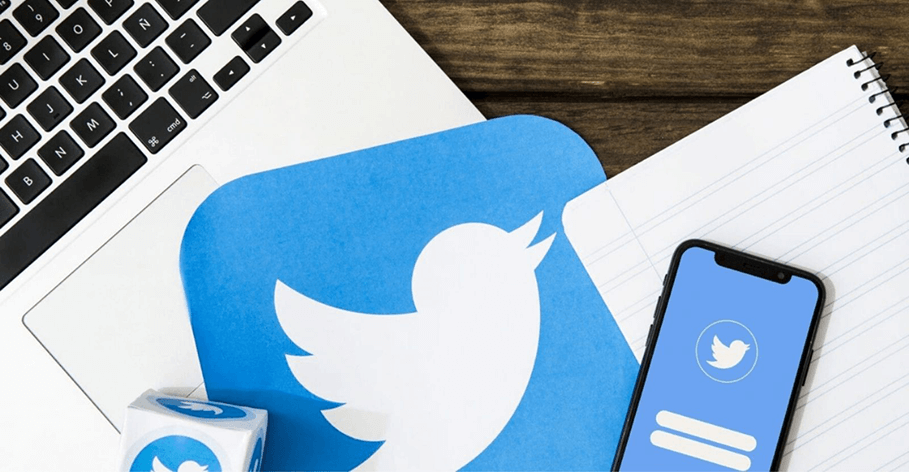Influence of Public conversation on Twitter Ads and Social Media Campaigns
A common question businesses ask is how to convert a social media campaign like Twitter Ads into valuable leads and sales. Also, how to best leverage social media to make the purchasing decision of consumers as simple as possible. At MRMW NA 2021 Nathaniel Greywoode gave insights into the optimal Twitter marketing strategy.
A carefully planned and designed conversation every day will help a business to leverage the customer’s purchasing decision. So, let’s share some of this stimulating new Twitter marketing strategy with you.
Can conversation actually be that powerful?
During the MRMW conference, Nathaniel Greywoode, the team lead for Twitter Advanced Analytics, talked about his recent experience with making purchasing decisions. He recounted how a recommendation from a friend led him to purchase his best hoover vacuum cleaner yet.
Nathaniel, in his presentation, resonated on how people like to spread the word when they find something worth sharing. And how this can translate into helping brands achieve their Key performance index. He also shared insight gained on their recent research on whether public conversation on Twitter, brand mentions, and retweets have impacts, and generate leads for business.
If you’re using Twitter Ads or planning, there are twitter marketing strategy that leverage the power of public conversations to maximize your campaign’s potential. Let’s take a closer look.
Public conversation as a Twitter Marketing Strategy
Twitter is a channel primarily for public conversation. It facilitates discussions on what is happening, and that includes conversations around brands. A study by Brand watch estimated that there are 500 million tweets sent each day. That is 6,000 tweets every second.
As an example, Nathaniel mentioned the latest announcement of Hummer by General Motors on Twitter. He recounted how compared to the day before announcing, there was a 2000 % lift in mentions of the new Hummer model on Twitter. However, the increase in tweets is not all that matters, but what impact it has to generate leads and achieve brand KPIs. The research team wanted to know what these numbers of tweets mean for business. Analyzing Twitter data and partnering with other analytical tools like BrandWatch, the team set out to answer the following research questions:
- Does conversation generate leads for business?
- Do they translate into any business outcomes or business KPIs? And
- How does brand type affect conversation responsiveness?
Twitter Conversation to Generate leads
Every business sees success differently. Among the different KPIs, the sales metric is quite predominant. This is why Nathaniel and his team decide to analyze the impact of Twitter conversations on business from a sales measurement point of view.
With a marketing mix modeling, the analysis was carried out on the database of over 40 historical marketing mix models. A meta-analysis was done on the impact that earned conversation had on lead generation. The result of this analysis shows that earned conversation has a significant impact on sales. It revealed two insights:
- A 10% increase in brand conversation can lead to a three percent increase in sales.
- The responsiveness of brand conversation by the public differs by brand category as it is related to brand loyalty.
The spectrum of tested platforms ranges from e-commerce to insurance startups and financial technology. For brands like e-commerce, where brand loyalty is a bit lower, you see the public reacting a bit more to changes in conversation. Comparatively, finance and tech brands which tend to be more brand loyal are less swayed by general brand conversations.
Conversation Drives Business Outcome Across the Revenue funnel
There is clear proof that conversation influences sales. But what is the impact on all other sections of the revenue funnel-like Awareness, favorability, consideration, and more?
Also, to determine if exposure to a brand conversation on Twitter can drive behavioral and other brand metrics, the team conducted an A/B analysis of Twitter conversations. They compared the metrics with three distinct audiences
- Control group (unexposed to brand twitter ads and unexposed to a conversation)and then there was
- A group who were only exposed to the twitter ads.
- And then a group that was exposed to the twitter ads and brand conversations.
Users exposed to both Twitter ads and conversation drove a significantly higher lift in tweets when compared with those who only saw the Twitter ads or neither. More interestingly, apart from Awareness, the result also holds for other business outcomes across the revenue funnel.
This provided substantial evidence that conversation is a twitter marketing strategy and does matter for driving business outcomes across the entire funnel.
Wielding the Power of Conversation for Twitter Ads
At first glance, Public conversation may seem exogenous and uncontrollable. And to harness its potentials for maximum business impact may look impossible. However, this becomes easier if we understand the business drivers of brand conversation.
One of the key drivers of public conversation on paid twitter ads. A meta-analysis of over 130 paid media campaigns in the United States shows that marketing campaigns could drive an average of 105% incremental lifting in user conversation. This implies that to maximize the sporadic effect of media conversations for business impact, one must advertise in a way that ignites conversation around the brand.
Advertising on Twitter is one of the most efficient channels for driving such conversation on a brand. The platform boasts four times more conversions per dollar invested when compared to other digital marketing channels. Participants who viewed Twitter ads were more likely to engage with your tweet than those that did not see the advertisements. Ultimately validating the use of twitter ads to influence public conversation for brands. This twitter marketing strategy meets business KPIs.
Broad or Specific Audience: Effect of Conversation Shape
The next question is how to position ad campaigns to maximize their potential to drive conversation. To do this effectively, it is important to understand the shape of a conversation. Is the discussion around a brand fragmented or cohesive?
Generally, the result of analysis by the team indicates fragmented conversations results from varied audiences in a conversation. On the other end, you have more cohesive conversation shapes, where there’s more alignment of the audience.
Although neither of the conversation shapes is superior, an advertiser can influence the conversation shape. This is done by selecting between a spectrum of a broad or specific target audience in paid Twitter ads.
Earned-Media Exposure
Another powerful effect of conversation shape is the earned-media exposure. When the Twitter analytics team targeted a broad audience, they observed that some Twitter users joined the conversation after seeing the tweet not from the original ad group but from an exposed user.
In other words, Twitter ads campaigns can have a target audience to prompt an initial wave of conversation. Due to their network connections, the audience will influence further brand conversations. Thus, improve brand recognition. This provides powerful insight on how brands can use audience features and conversation shape in their twitter marketing strategy to amplify the impact of their paid Twitter Ads through public conversations.
In Short Words
While the primary goal of conversation in twitter marketing strategy is to respond to and engage with consumers, the secondary goal is to influence. Here are three insights to remember when preparing your next twitter marketing strategy leveraging on conversation.
- Conversations on Twitter can improve sales, especially for brands with less loyalty.
- Paid twitter ads and social media campaigns should be done in a way that increase mentions, retweet and boost conversation around a brand.
- Although both narrow and broad audience shapes are effective conversation types, the former is a conversation type that results in earned media exposure.
According to Nathaniel, the future research of the team will focus on the substance of a conversation (content) and its influences on brand metrics. Since this is likely to differ by the audience, it can give us insight for future campaign objectives and. And a new twitter marketing strategy.
You can find all presentations from MRMW in our MRMW video library. It also contains more than 100 case studies from past MRMW conferences. Your next chances to join MRMW live are during our MRMW Europe (Berlin, October 20&21, 2021) and MRMW APAC (Singapore, November 10&11) editions.
Sign-up to receive our regular newsletters, updates and special offers!











 by
by 

